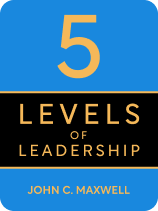

This article is an excerpt from the Shortform book guide to "The 5 Levels of Leadership" by John C. Maxwell. Shortform has the world's best summaries and analyses of books you should be reading.
Like this article? Sign up for a free trial here .
What is pinnacle leadership? What do you think a leader should do once they’ve reached the peak of their leadership journey?
Pinnacle leadership is the highest level of leadership you can achieve. Leadership at this level lifts the entire organization and creates an environment that benefits everyone in it, contributing to its lasting success.
Keep reading to learn about the pinnacle leadership, its pros and cons, plus some tips to help you make the most impact once you reach this level.
What Is the Pinnacle Leadership?
Level 5 culls together everything you’ve learned, the skills you’ve honed, and your natural leadership ability to bring growth and success to an organization. Pinnacle leadership is about making a lasting impact, developing Level 4 leaders so that your organization continues to thrive even after you’ve left. It’s about leaving a legacy behind.
Pros of Pinnacle Leadership
The upsides of Level 5 are:
- It puts your organization ahead of the pack. Organizations that have found lasting success rely on leadership to keep them going. They don’t falter when a superstar leader moves on or retires because there are other worthy leaders who’ve been trained to take over and keep things running smoothly.
- Example: For decades, General Electric has been consistently lauded for its leadership reproduction. The organization, led for many years by Level 5 leader Jack Welch, puts an emphasis on developing leaders who develop leaders.
- It creates a lasting impact. Pinnacle leadership allows you to develop the next generation of leaders, who will then develop the next generation of leaders, and so on. This creates a legacy that can last well after you’ve left.
- It amplifies your influence. Level 5 leaders are so highly respected that their influence extends beyond their organization and sometimes even beyond their industry. Just keep in mind that this influence also means a responsibility to serve others. After going through the process of learning and then reaping rewards and recognition, pinnacle leaders now have to focus on giving back, using their influence to raise up other leaders.
Cons of Pinnacle Leadership
Here are the downsides of Level 5:
- You might think you’ve reached the end of your journey. In How the Mighty Fall, Jim Collins describes arrogant leaders as those who feel entitled to their success, believing that success will follow them no matter what they decide to do. As a leader at a high level, you have great influence and so the impact of your decisions affects not just you but also your organization. If you think that you can rest because you’ve finally achieved success and have nothing left to learn, it can cause your organization to lose steam. To be a Level 5 leader, you should never rest on your laurels, and you must keep trying to improve yourself and your organization.
- You might become too full of yourself. Because so many people look up to you, you might become overconfident, which can lead to bad decisions. Remember that the laws of leadership apply, no matter what level you’re on. Be confident but stay grounded—success is never a one-man show, and there were surely a lot of people who helped you get to where you are.
- Example: King Gustavus Adolphus of Sweden experienced success after success, which led to the Golden Age of Sweden. But all his accomplishments made him think that he could do no wrong. During the Thirty Years War, he designed a ship—despite not having the skills or experience—and had it built in a hurry. On its maiden voyage, the ship sank less than a mile from where it set sail, toppled over by a gust of wind.
- You might lose sight of what’s important. If you reach pinnacle leadership, you’ll have a lot of opportunities that will open up to you, giving you a chance to spread your influence even farther and wider. But you shouldn’t be distracted. Don’t lose your focus on the vision and the work you’re supposed to be doing, and continue to lead at the highest level.
- Example: Halfway through his stint as CEO at Chrysler, Lee Iacocca turned things around and saved the company. And then, instead of focusing on the company’s continued growth, he went on a personal victory lap, pushing his own brand: He made the rounds of talk shows, starred in commercials, considered running for president, and wrote a bestselling autobiography. He became immensely popular—but by the second half of his tenure, Chrysler had fallen far behind the general market.
Maximizing Pinnacle Leadership
While a lot of opportunities will open up to you at the highest level, pinnacle leadership is more about giving than taking. Let these best behaviors guide youl:
1. Give others the opportunity to lead. As a Level 5 leader, you want to develop leaders, not just gain followers, and that means that you should genuinely want other people to succeed, help them work on their strengths, empower them to lead, see their potential and help them get there, and set aside enough time to mentor them.
You might think there’s only so much room at the top so developing leaders would be pointless. But the beauty of it is that when you develop leaders and find places where they can contribute, you start a cycle: The increased horsepower fuels an organization’s growth, which in turn leads to a need for more good leaders.
2. Never stop mentoring. Different people have different motivations and reactions to mentorship, so you can never tell which ones will turn out to be the strongest leaders in the end. Your next Level 5 leader might be a dark horse, so it’s important to identify a pool of potential leaders and give your best to each one when you mentor them.
- Example: At General Electric, Jack Welch had a list of potential successors divided into three categories: leaders on the inside track, leaders with potential, and long shots. Surprisingly, his eventual successor was one of the long shots.
3. Have an inner circle to keep you in check. Surround yourself with a trusted group of fellow leaders and let openness, honesty, and loyalty reign. Those in your inner circle should not only help you raise the bar at the organization but also help keep you humble by telling you the truths you need to hear.
4. Think of the possibilities for your organization and then make them happen. As a Level 5 leader, you’re in a unique position to effect great change. These changes can be wide-ranging, depending on your specific organization and circumstance. Think about products, services, values, and other improvements you can introduce.
5. Answer: “Who is going to replace me?” Start putting a succession plan in place. Once you’ve properly trained your replacement, gracefully bow out before you have to. Think of yourself as a relay runner passing the baton to the next person while running at full speed—you don’t want to slow down before you leave. Keep the momentum going.
6. Make a positive impact that lasts. What do you want your legacy to be? Once you’ve determined what it is, align your actions. If what you do every day doesn’t contribute to the legacy you want to leave behind, then it’s time for a change.
Applicable Laws of Leadership
The following are the relevant Laws of Leadership for those in Level 5:
- Leaders Are Respected, and People Follow the Strongest and Most Respected Leader. You steadily gain respect as you make your way up the levels, but on Level 5, this respect begins to compound. Because your influence is far-reaching, everyone wants to follow you.
- Leaders Pay Attention to Intangibles. Naturally gifted leaders should learn to listen to their intuition. Often, you “just know” even when you don’t have tangible reasons to back it up.
- Leaders Factor in Timing. It’s not just about doing the right thing, but also about doing it at the right time. Use the experience you have and the instincts you’ve honed to know when the timing is right.
- Leaders Have a Succession Plan. Your goal is to establish something that outlasts you, and that’s only possible if you’ve trained people to carry on after you’re gone.
- Leaders Lead Leaders. Your priority should be to develop other leaders, not to gain followers.

———End of Preview———
Like what you just read? Read the rest of the world's best book summary and analysis of John C. Maxwell's "The 5 Levels of Leadership" at Shortform .
Here's what you'll find in our full The 5 Levels of Leadership summary :
- How to go from being a leader in title only to a true leader
- How to create a legacy as a leader
- Why you have to help others move up after you've evolved as a leader






